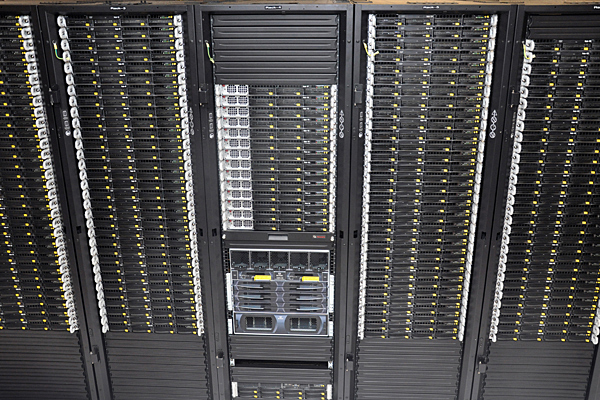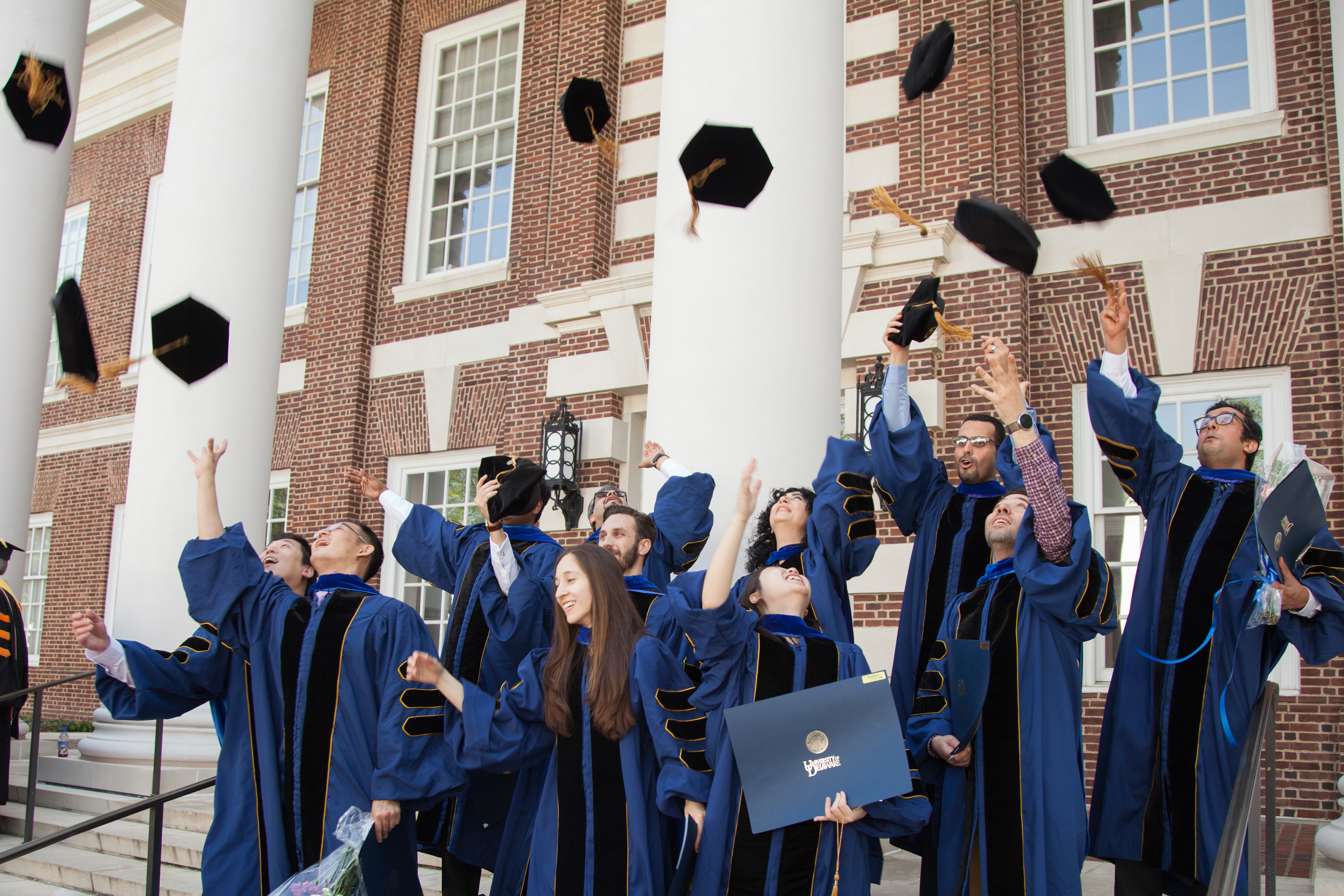UD's new Mills computing cluster
New research computing cluster named for UD professor emeritus
3:55 p.m., Dec. 7, 2011--The University of Delaware has announced the acquisition of a new 5,000-processor, high performance computing (HPC) cluster that will serve the needs of advanced research on campus and that has been named Mills in honor of David L. Mills, UD professor emeritus and a pioneer of the early Internet and its precursor networks.
The Mills cluster is expected to begin full operation in January.
Campus Stories
From graduates, faculty
Doctoral hooding
David L. Mills
Mills was a professor in the University's Department of Electrical and Computer Engineering from 1986-2008 and continues to teach and lead research sponsored by such agencies as the NASA Jet Propulsion Laboratory, Defense Advanced Research Projects Agency and National Science Foundation.
Mills played an essential role in the development of the internetwork gateways and protocols that provide the backbone to today’s Internet, and actively participated in the evolution of Internet protocol (IP), transmission control protocol (TCP), file transfer protocol (FTP), simple mail transfer protocol (SMTP), Telnet and other protocols on which modern researchers rely.
In particular, his Network Time Protocol (NTP) was essential to the early development of the ARPANet, which led to the modern Internet. The protocol enables precise time synchronization, without which online experiments could not be accurately measured and controlled, stock market buy and sell orders could not be timed and web streaming of video would be chaotic.
The protocol makes possible such online activities as aviation traffic control and monitoring, radio and TV programming launch and control, multimedia synchronization for real-time teleconferencing and traffic engineering.
As part of the group of researchers who helped build the Internet, Mills once said in an interview that the project "was great fun."
"The strangest thing about the whole process is that we were inventing email, file transfer protocols and remote interactive access, using the very infrastructure that we were developing," Mills said. "In other words, we were building the infrastructure so that we could build the infrastructure. I learned the most important lesson of my life from this experience -- that people who are actually going to use services should be the ones to build them."
"The University of Delaware is proud to name its new computing cluster in honor of Prof. David L. Mills, whose influence on and contributions to computing, networking, and computer engineering at the University and whose contributions to the development of the protocols behind the Internet itself cannot be overstated," said Carl Jacobson, vice president for Information Technologies (IT).
Mills cluster impacts UD research
Jacobson added, "The Mills computing cluster will introduce a new approach to research computing at the University of Delaware."
Many University researchers agree that the new cluster is important to their work.
Dion Vlachos, Elizabeth Inez Kelley Professor of Chemical Engineering and director of the University’s Catalysis Center for Energy Innovation, said that the Mills cluster will help the Catalysis Center develop sustainable energy applications. "We are eager to run simulations on the cluster to speed the design of new biorefinery processes," he said.
According to Vlachos, "The simulations run on the cluster will facilitate the design of new catalysts to enable chemical transformations that can turn biomass into valuable plastics and fuels."
The new cluster will assist Lian-Ping Wang, professor of mechanical engineering, with his research in microphysical processes that affect large-scale meteorological and environmental processes.
"Meteorologists working on forecasts of large-scale weather events rely on us to provide analytical models of the very small-scale processes that control the growth of rain droplets within clouds," he said. "In another area of research, we simulate what happens when very small particles used in soap, paints, and other contaminants get into the soil."
According to Wang, high performance computing is integral to his group’s research. "We use clusters at the National Center for Atmospheric Research (NCAR) and XSEDE for much of our production work. But the Mills cluster will let us use these resources more effectively."
Wang said that he will start off using UD’s cluster "as a bridge machine: to train my students in parallel processing and scalable computation and to develop and test our code. The UD cluster will start off being an excellent training and development resource for us; as UD develops its high performance computing capabilities, we look forwarding to doing some of our production simulations right here on campus."
Gregory A. Miller, professor and chair of the Department of Psychology, anticipates that the new UD cluster will help with his research in brain mechanisms in human cognition, human emotions, and mental illness.
"Analysis of brain images takes a huge amount of computer resources," he said. "The new Mills cluster will help us move our research along much faster."
Miller added that even though his group is running analyses on their current Linux systems, "The parallel processing we can do on the new cluster will make data analysis much more efficient. For example, we’ll be able to analyze many brain slices from different subjects simultaneously."
Mills: Specific details
Based on priorities expressed in the faculty's Research Computing Task Force report (April 2011), IT responded by rapidly developing and implementing its first high performance computing (HPC) Community Cluster plan.
The Mills HPC cluster was assembled by Penguin Computing and features 200 compute nodes with 5,136 processor cores, over 14 terabytes of RAM, and about 200 terabytes of disk space.
Mills is being funded collaboratively by University researchers and IT. Fifty faculty stakeholders from 19 different UD departments or centers purchased the compute nodes, and IT funded the storage, switch, maintenance, and physical and staff infrastructure. Each stakeholder will have his or her own set of compute nodes, but there will also be collaborative queue management to allow open access to unused cycles.
Mills is the first in a series of high performance computing clusters IT plans to build collaboratively with UD faculty to improve research computing. IT plans to solicit interest for additional clusters every 12 months over the next five years to respond to increasing research needs at UD and emerging HPC technologies.
For more information about UD’s support of high performance research computing, visit IT’s Research Computing website.
Article by Richard Gordon and Neil Thomas
Photos by Kathy F. Atkinson and Richard Gordon












